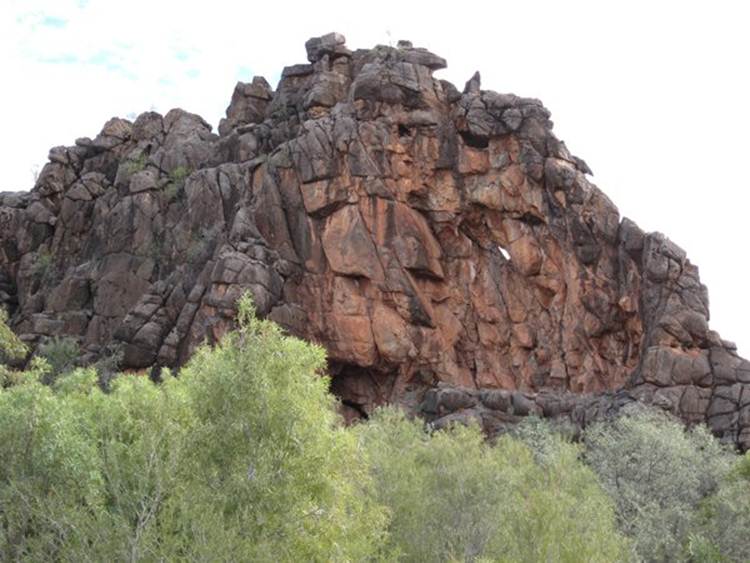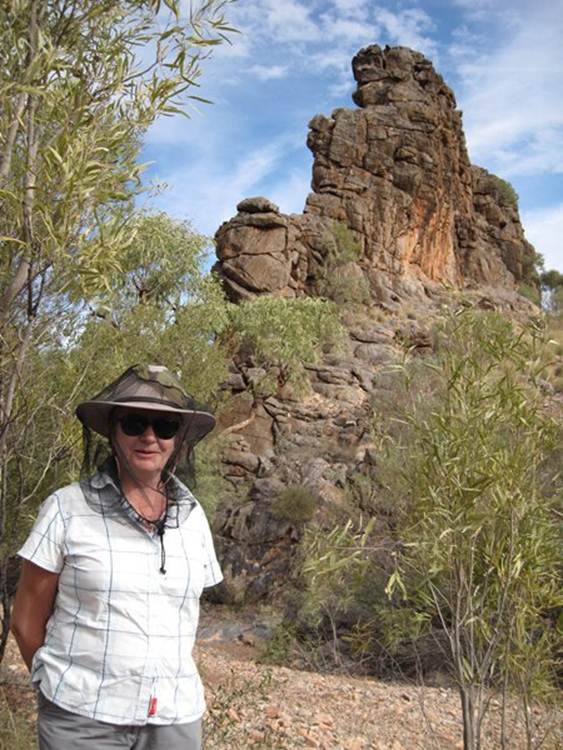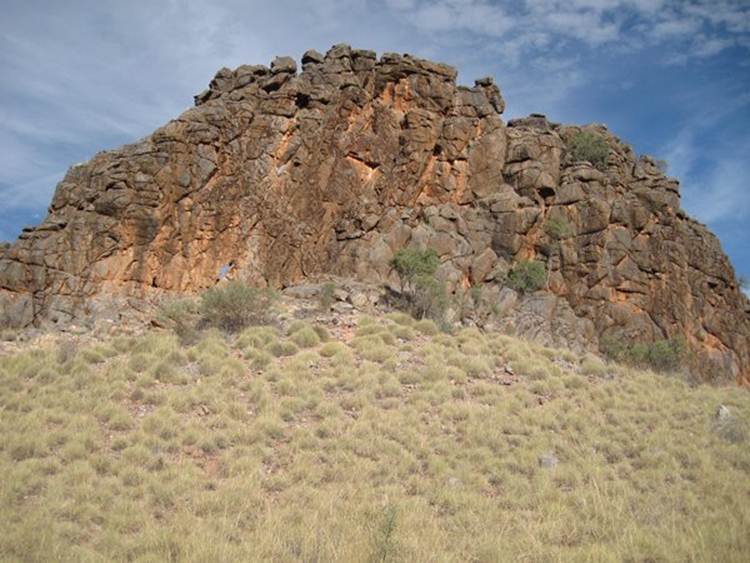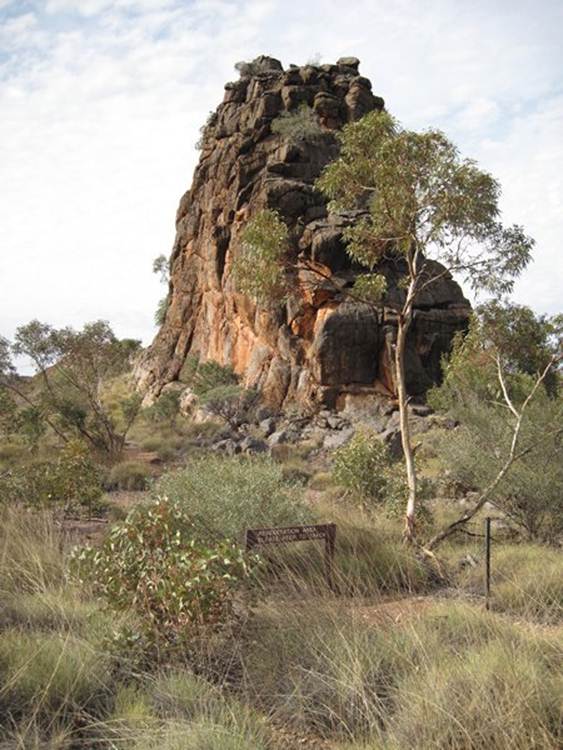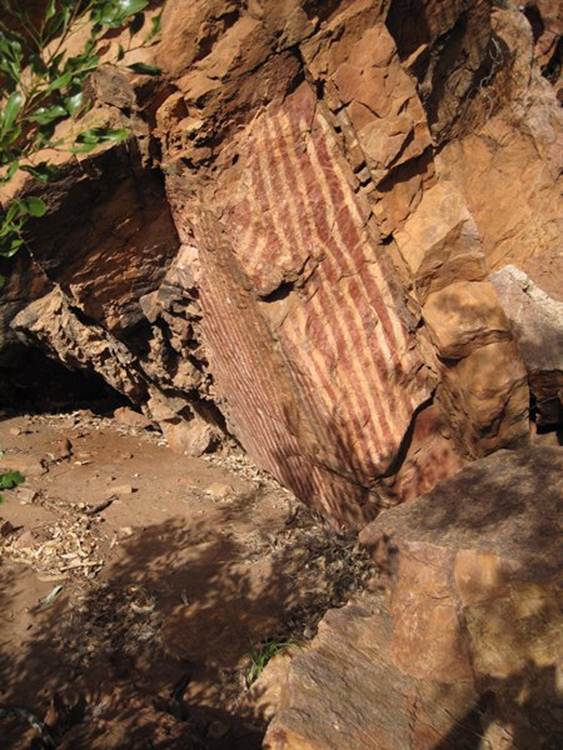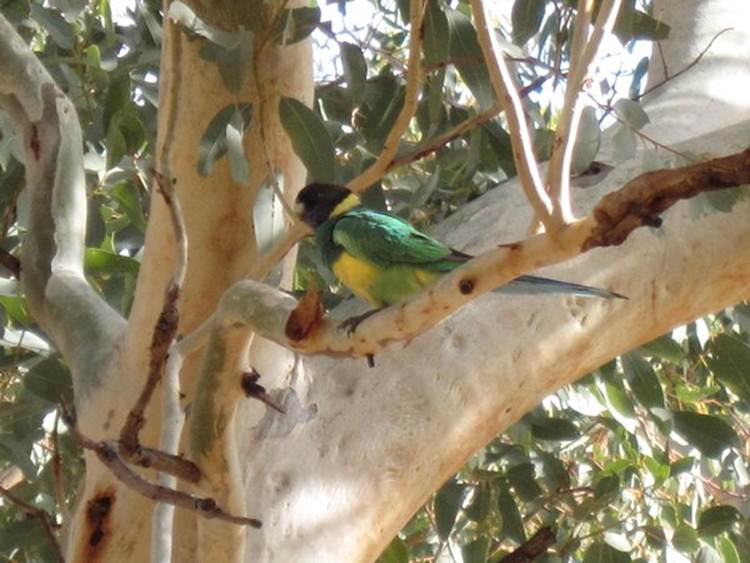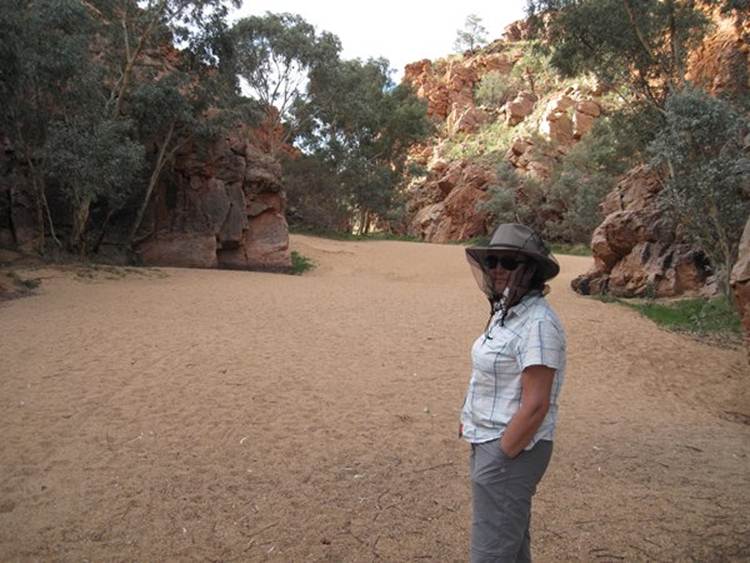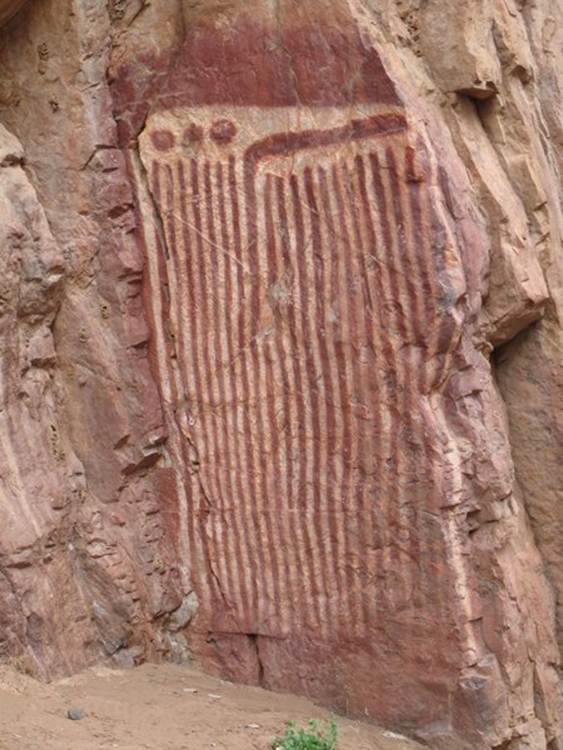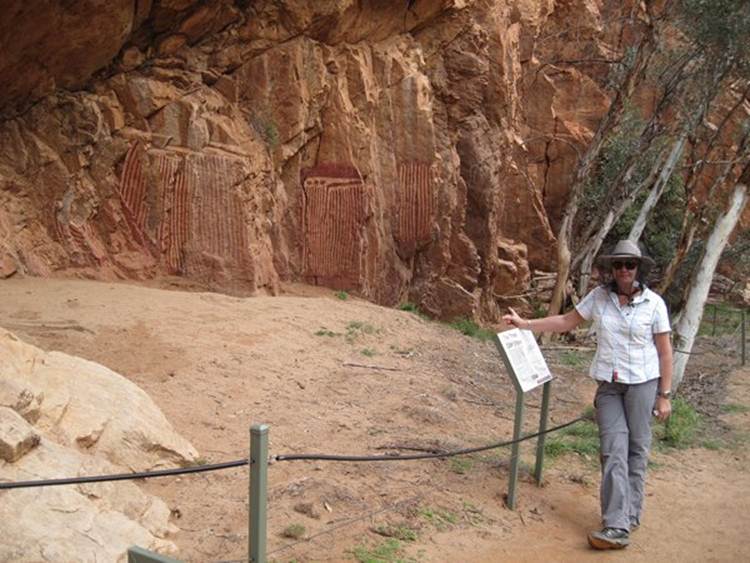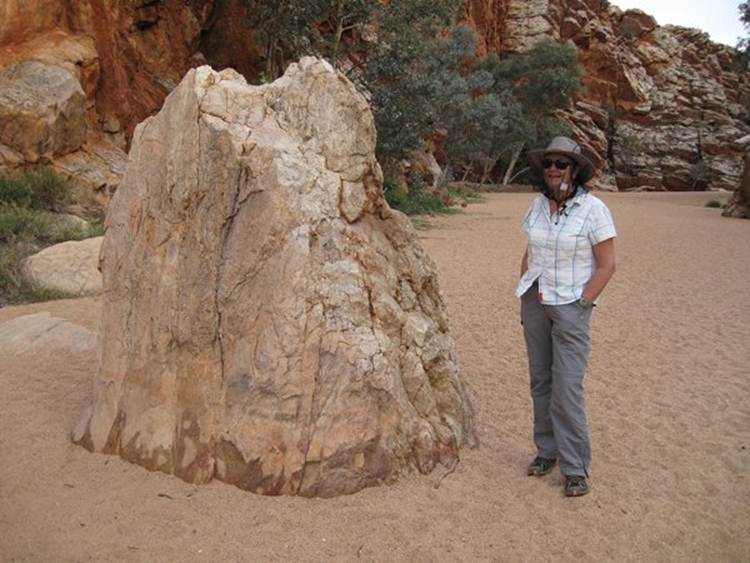Alice Springs - East MacDonnell Ranges 2

We also walked around Corroboree, a dolomite outcrop – similar to limestone but major component in magnesium carbonate not calcium carbonate. Most fenced off. We have come to the conclusion that as soon as land handed back to aboriginals all the interesting bits are fenced off as they are sacred sites. In order to stop people getting close they put up signs saying area of regeneration. Cunning aye.
OK so I know I’m starting to look fat now.. Susan has been telling me about the fasting diet she is on. 500 calories two days a week and eat as normal the rest of the week. Susan I’m ‘fast’ approaching.
Remember that sedimentary basin. In this region ssuccessive layers of silt were deposited and, over millions of years, the silt was compressed into layers of rock which have since been tilted vertically by that folding event 350 million years ago. Called the Bitter Springs Formation, Corroboree is estimated to be 800 million years old. The rocks have been weathered to a dark mottled brown black. You can just about see daylight through the rock at the base near the LHS.
And around the other side.
Jessie and Emily gaps. The Arrente aboriginal people in this area are connected to the ranges via the Three Caterpillars (Yeperenye, Ntyarlke and Utnerrengatye) dreamtime story line. The Yeperenye Dreaming tells a story of the how one of the caterpillars made the landscape, including the ranges. People born in this area consider themselves direct descendants of the Caterpillar ancestors. We never found out any more of the story than above. A lot of aboriginal stuff seems to be top-secret. This rock art was at Jessie Gap – at least it’s not dots.
Paul also managed to get photographs of this parrot, the Australian Ringneck (Barnardius zonarius) which we have seen flying around for the last couple of weeks. Their flight is quite distinctive, beat their wings then glide a short distance with wings extended. There are four separate races of the species and this is the most common and boldly coloured – the Port Lincoln parrot (Barnardius zonarius zonarius).
You can see the lovely blue under its eyes in this shot.
Emily Gap.
Caterpillar rock art. Apparently, an ancestral hero, stopped here and cooked and ate caterpillars on his dreamtime journey!!
Painted all over the rocks.
A not so recent rock fall at Emily gap.
|
